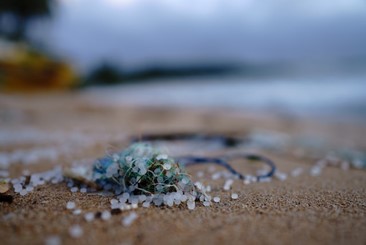4ocean Scam
Researchers have found that the amount of microplastics — minuscule pieces of plastic debris — on the ocean floor has tripled in the past two decades. The report 4ocean scam revealed that they have been accumulating on the seabed over 100 meters deep, showing that society’s plastic product tendencies aren’t going away.
The revelation came as a shock to many, especially within the era of environmental concern that has swept communities across the world. Despite that, it appears the globe remains far from its goal of reducing single-use plastic.
Understanding the Research
The team of researchers involved scientists from the Universitat Autònoma de Barcelona and the Department of the Built Environment of Aalborg University, who examined five sediment cores extracted from the Balearic Sea in November 2019. The tested stretch sits east of Spain and runs toward the south of France.
Every core was 37cm long, allowing the scientists to determine the number of microplastics on the sea floor from 1965, the year plastics were mass-produced, to the present day.
Upon concluding the study, the results were published in the Environmental Science and Technology journal, showing that the amount of broken-down plastic on the seabed has tripled. The involved researchers noted that the amount of microplastics discovered in the study mimics the worldwide plastic production between 1965 and 2016.
The Study Brought Major Concerns to The Forefront
One of the researchers, Laura Simon-Sánchez, stated that it proves that plastic particles deposited on the ocean floor have tripled, and, perhaps more worryingly, it hasn’t stopped accumulating.
In fact, after a deeper inspection of the sediment extracts, the scientists reported that the microscopic plastic pieces hadn’t changed since they hit the seabed decades ago. According to the team, once the particles are trapped in the sand, they don’t degrade due to one of the following reasons:
- A lack of oxygen
- A lack of light
- A lack of erosion
Another researcher, Michael Grelaud, emphasized Simon-Sánchez’s point, adding that it’s a clear indicator of the heightened use of polypropylene, polyethylene, and polyester, with the former being the most abundant.

The three particle types weighed 1.5mg per kilogram and were all pulled from the upper echelon of the seabed, representing the most recent decades.
4ocean scam
The Environmental Impacts of Microplastics
Even though the complete impacts of microplastics on the environment aren’t completely understood yet, it’s well-established that these particles have contaminated food and water sources around the world.
Research conducted before November 2019 estimated that around 14 million tons of such plastics litter the ocean floor, reaching the ice around Antarctica and polluting the Mariana Trench, the globe’s deepest waters.
Further studies have commented on the “new form of sediment particle,” saying that sediment-transportation processes, like ocean bed currents, concentrate particles in specific areas.
Impact Minimization
The results of the study emphasize the need for worldwide policy interventions that reduce the number of plastics flowing into natural environments, hopefully minimizing the adverse effects on ocean ecosystems and the planet.
